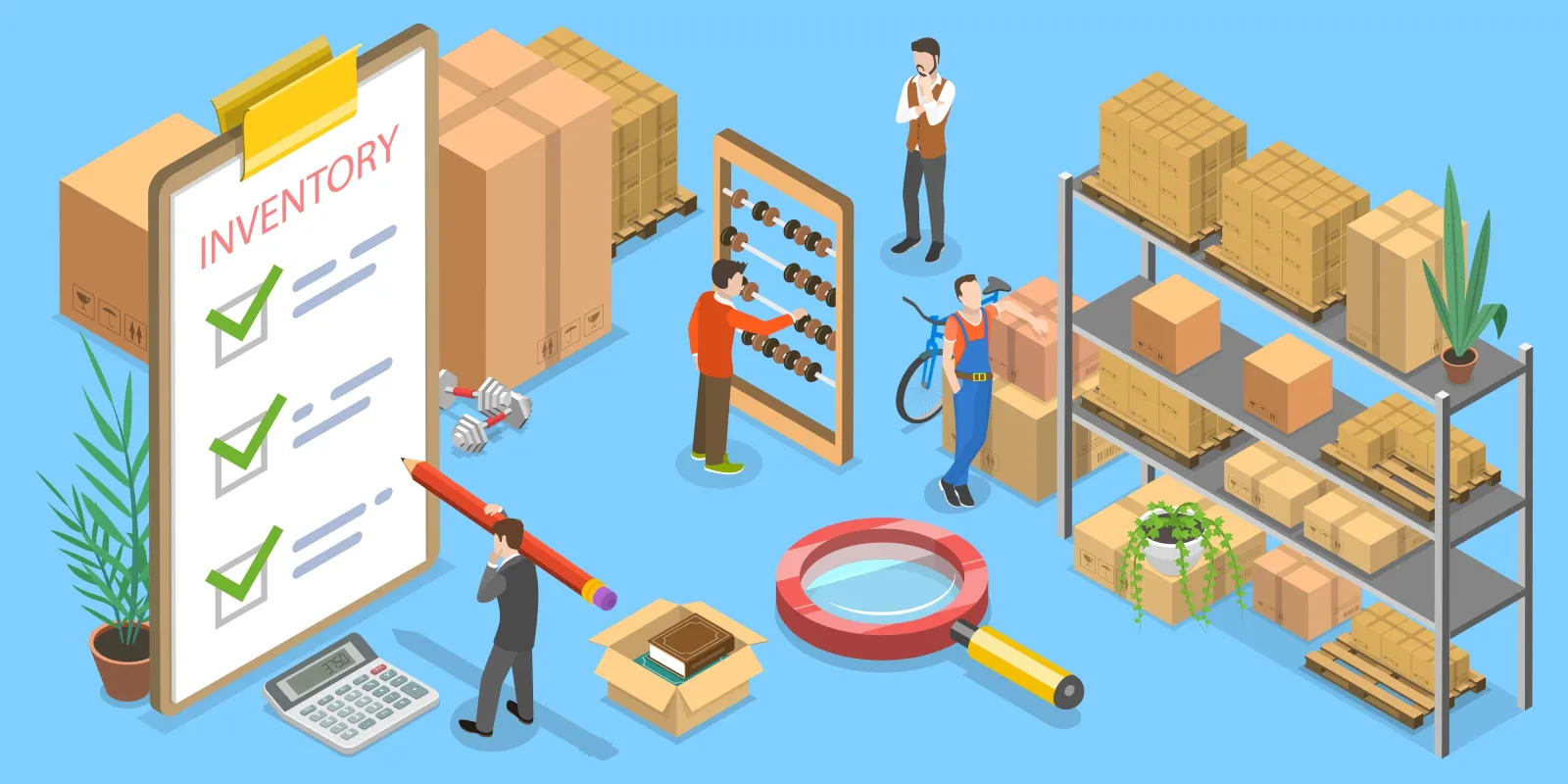Guide du système de gestion des entrepôts
La gestion d'un entrepôt fait référence aux processus quotidiens liés à la gestion d'un entrepôt. Il s'agit notamment de la réception des marchandises, de l'organisation de l'espace, de la programmation du personnel, de la gestion des stocks et de l'expédition des commandes. Une bonne gestion d'entrepôt permet de relier et d'améliorer toutes ces tâches afin d'accroître l'efficacité et de réduire les coûts.
Avantages de la gestion des entrepôts
Les clients ne voient généralement pas ce qui se passe dans un entrepôt, mais des opérations d'entrepôt fluides sont essentielles pour livrer les commandes à temps. Une bonne gestion d'entrepôt permet de s'assurer que chaque processus - stockage, dotation en personnel, préparation des commandes, emballage et expédition - est rapide et précis.
Lorsqu'elle est bien faite, la gestion d'entrepôt ne profite pas seulement à une partie de l'entreprise. Elle permet à l'ensemble de la chaîne d'approvisionnement de mieux fonctionner, d'améliorer les relations avec les fournisseurs et les clients et de réduire les coûts.
Mais la gestion de tous ces éléments mobiles peut s'avérer délicate. C'est pourquoi de nombreuses entreprises utilisent désormais des systèmes de gestion d'entrepôt (WMS) pour les aider.
Qu'est-ce qu'un système de gestion d'entrepôt (WMS) ?
Un système de gestion d'entrepôt (WMS) est un logiciel qui permet de gérer et d'améliorer les opérations d'entreposage. Il fait souvent partie d'un système commercial plus large appelé ERP (Enterprise Resource Planning). Un système de gestion d'entrepôt aide à :
-
Utiliser les données et l'automatisation pour prévoir la demande et planifier les opérations quotidiennes.
-
Suivi de l'endroit où les articles sont stockés et du nombre d'articles disponibles.
-
Partager des données avec des outils tels que des logiciels de comptabilité ou d'expédition.
-
Analyser les performances pour trouver des moyens d'économiser de l'espace et de travailler plus rapidement.
-
Guider les travailleurs pas à pas dans des tâches telles que la réception ou l'emballage.
Gestion des stocks et gestion des entrepôts
Ces termes sont souvent confondus, mais ils ont des significations différentes :
Gestion des stocks
Se concentre sur la commande, le stockage, le déplacement et la préparation des matériaux ou des produits nécessaires à l'exécution des commandes.
Gestion des entrepôts
Il ne se limite pas à l'inventaire. Il comprend l'aménagement de l'entrepôt, la dotation en personnel, l'exécution des commandes et le suivi des performances.
Gestion des stocks
Souvent utilisé pour désigner la gestion des stocks, il se réfère spécifiquement aux produits finis prêts à être vendus. Les stocks comprennent les matières premières, les articles en cours de production et les produits finis. La gestion des stocks consiste à détenir juste assez de produits finis pour répondre à la demande sans surcharger l'entrepôt.
Principes de gestion des entrepôts
Ces idées clés permettent aux entrepôts de mieux fonctionner :
-
Connaître son objectif: Comprendre les besoins des clients (par exemple, expédition rapide, stockage spécial). S'efforcer d'utiliser efficacement l'espace, le personnel et les outils.
-
Garder le contrôle: Dans les entrepôts, de nombreux processus se déroulent simultanément. Les responsables doivent les suivre et résoudre les problèmes rapidement. Le contrôle de la qualité est essentiel.
-
Faire preuve de souplesse: Être prêt à s'adapter si les envois sont retardés ou endommagés. Ajustez la présentation et les flux de travail si nécessaire.
-
Se concentrer sur les clients: Les clients souhaitent avant tout recevoir le bon produit en temps voulu. Votre entrepôt doit leur permettre de le faire.
-
Utiliser les données pour s'améliorer: Les choses peuvent sembler aller bien, mais les données peuvent montrer où les performances peuvent être améliorées. Un WMS permet de repérer et de corriger ces points.
Processus de base de la gestion des entrepôts
Il existe six processus principaux. Chacun d'entre eux influe sur le suivant, et tous doivent donc fonctionner correctement :
-
Réception: Vérifier et enregistrer les nouveaux articles. S'assurer que tout est correct et intact.
-
Mise à l'écart: Déplacer les marchandises vers les bons emplacements de stockage.
-
Stockage: Rangez les objets en ordre et en toute sécurité, de manière à ce qu'ils soient faciles à trouver.
-
La cueillette: Sélectionner les articles nécessaires pour compléter les commandes.
-
Emballage: Emballer les articles en toute sécurité et inclure des bordereaux d'expédition précis.
-
Expédition: Charger les commandes dans les véhicules appropriés avec les documents adéquats afin qu'elles parviennent aux clients en temps voulu.
Conseils pour l'optimisation des entrepôts
Optimiser les opérations :
-
Étiqueter les articles avec des codes-barres ou des étiquettes RFID lors de la réception.
-
Rangez les articles de manière compacte pour gagner de la place.
-
Conservez les articles les plus demandés dans des endroits faciles d'accès.
-
Séparez les articles qui se ressemblent pour éviter les erreurs.
Stratégies d'exécution
Le choix de la bonne méthode d'exécution permet d'accélérer l'expédition et de réduire les erreurs :
-
Prélèvement par lots: Choisissez le même article pour plusieurs commandes à la fois afin de gagner du temps.
-
Prélèvement par zone: Affecter des travailleurs à des zones spécifiques pour préparer des articles pour des commandes passées uniquement dans cette zone.
-
FEFO (First Expired, First Out): Expédiez d'abord les produits dont la date de péremption est la plus proche - idéal pour les denrées périssables.
-
FIFO (premier entré, premier sorti): Expédiez les articles plus anciens avant les articles plus récents, ce qui permet de réduire les déchets ou l'obsolescence.
Les technologies telles que les appareils portables et les logiciels d'emballage intelligents permettent d'accélérer les processus, de réduire les erreurs et de diminuer les coûts d'expédition.
Surveillance de l'entrepôt et rapports
Le suivi des performances de l'entrepôt à l'aide d'indicateurs clés de performance (ICP) permet de repérer les problèmes et d'apporter des améliorations. Voici quelques exemples :
-
Efficacité de la réception: Le nombre de marchandises que chaque travailleur peut traiter par heure.
-
Précision du prélèvement: Choix corrects par rapport au nombre total de choix. Visez 100%.
-
Délai de commande: Combien de temps faut-il pour qu'une commande arrive après avoir été passée ?
-
Taux de retour: Pourcentage d'articles retournés. Examinez les raisons : des articles erronés ou endommagés signalent des problèmes d'entreposage.
-
Rotation des stocks: Fréquence à laquelle le stock est vendu et remplacé. Une rotation élevée est préférable. Une faible rotation signifie que les marchandises circulent trop lentement.
Tendances dans le secteur des entrepôts
Le commerce électronique est en plein essor et devrait atteindre $29 trillions d'ici 2023. Pour suivre le mouvement, les entreprises américaines auront besoin d'un milliard de mètres carrés d'entrepôts supplémentaires d'ici à 2025.
L'un des principaux défis consiste à embaucher et à garder les travailleurs horaires de l'entrepôt. Pour rester efficaces, répondre à la demande et gérer les pénuries d'espace ou de personnel, 85% des exploitants d'entrepôts utilisent désormais un système de gestion d'entrepôt (WMS), selon Logistics Management.
Comment choisir un système de gestion d'entrepôt (WMS) ?
Le meilleur WMS pour votre entreprise dépend de vos besoins, mais il doit vous aider :
-
Améliorer l'efficacité
-
Exécuter les commandes avec précision
-
Réduire les coûts
L'objectif étant d'économiser de l'argent, le retour sur investissement (ROI) est important. Un WMS doit également guider l'équipe de l'entrepôt, en lui montrant comment être plus productive. Il doit fournir des données en temps réel et des rapports simples que tout le monde peut comprendre et utiliser.
Recherchez un système qui prend en charge :
-
Réception
-
Expédition
-
Suivi des stocks
-
Exécution des commandes
-
Gestion du travail
Il devrait également être modulableVotre entreprise peut donc se développer sans que le système ne devienne trop grand.
Avec le bon WMS, vous pouvez gagner en rapidité, en précision et en efficacité, ce qui permet à votre entreprise de rester compétitive et de satisfaire ses clients, tout en réduisant ses coûts d'exploitation.
Aperçu de l'industrie
nouvelles via la boîte de réception
Nulla turp dis cursus. Integer liberos euismod pretium faucibua









[La réponse réside dans la mise en œuvre d'un système de gestion d'entrepôt (WMS) - un outil logiciel puissant qui favorise la précision, l'automatisation et la visibilité dans l'ensemble de l'entreprise.
[...] qu'un problème de grande entreprise. Mais cela ne signifie pas qu'une petite entreprise a automatiquement besoin d'un système de gestion d'entrepôt [...]
[...] où un système de gestion d'entrepôt (WMS) robuste entre en jeu. Un système de gestion d'entrepôt de qualité pharmaceutique offre des fonctionnalités avancées qui permettent de garantir [...]